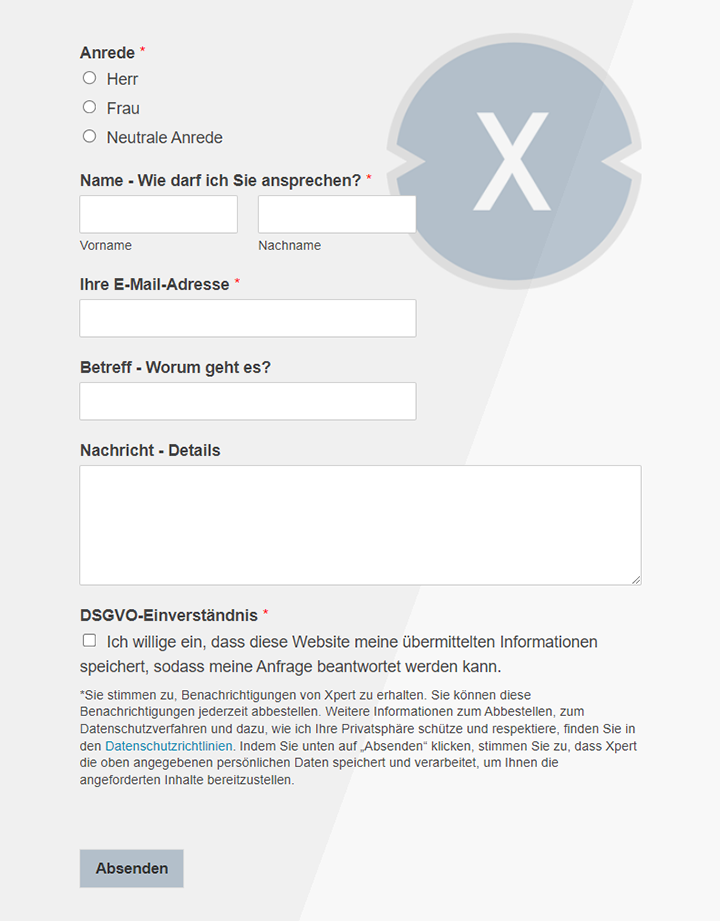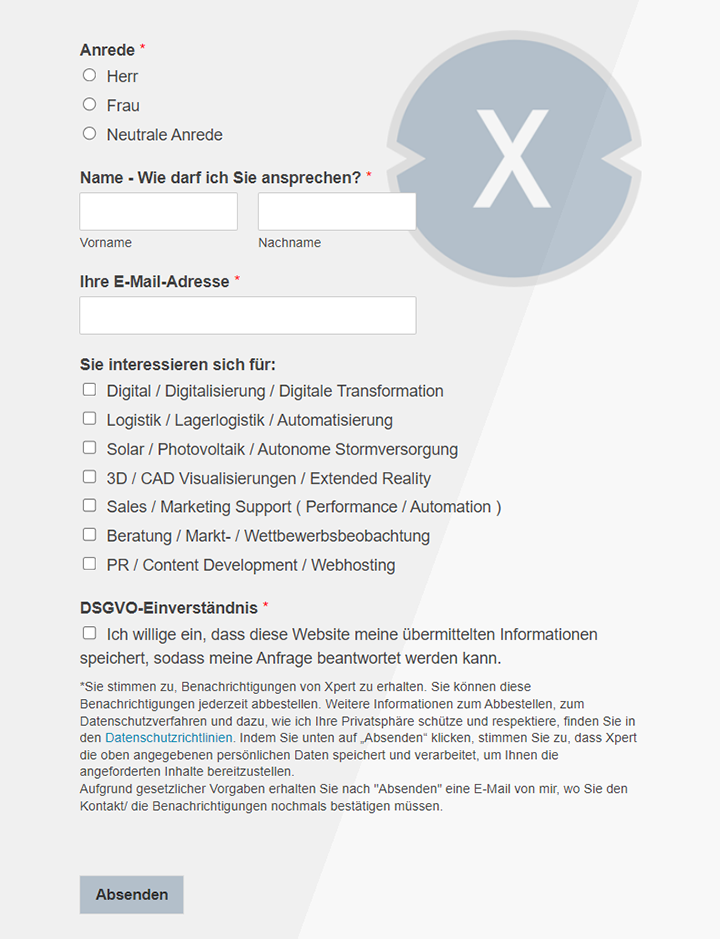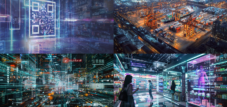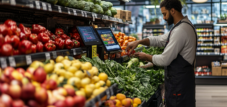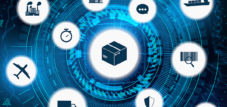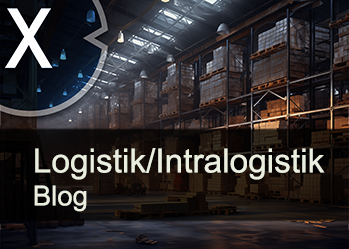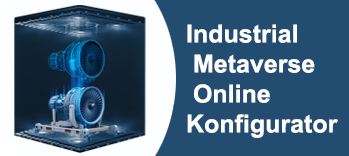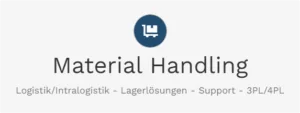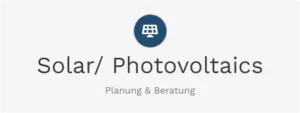Digitalization began in 1974 with chewing gum: Why the history of digitalization needs to be rewritten
Xpert pre-release
Language selection 📢
Published on: January 6, 2025 / Update from: January 6, 2025 - Author: Konrad Wolfenstein
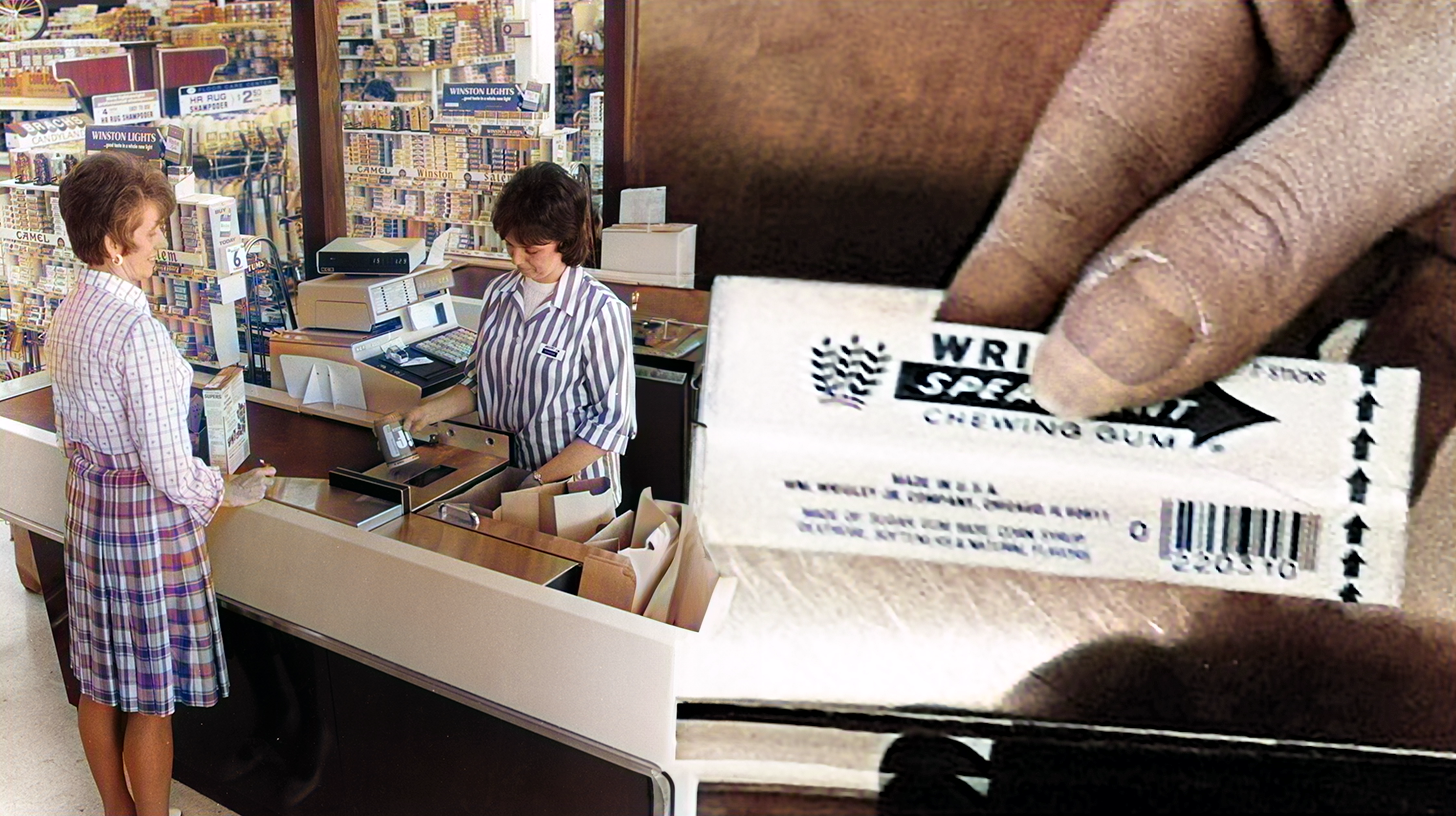
On June 26, 1974, the barcode on a Wrigley's Juicy Fruit brand of chewing gum was scanned for the first time in a Marsh supermarket in Ohio, USA - Image: Wrigley/GS1 / Color adjusted: Xpert.Digital
Farewell to the beep? Why the barcode is facing a major transformation
Future without lines: How the DataMatrix code is changing our economy
The omnipresent “Piep”, which has been sounding at supermarket coffers and in goods camps for decades, marks more than just completing a purchase or registration of an article. It is the acoustic echo of a revolution in the global economy, a symbol of efficiency and automation, which is inseparable from the barcode. However, after an impressive success story, in which ten billion scans worldwide are carried out every day, the barcode is at a turning point. A new generation of codes is ready to change the way we identify products and exchange information fundamentally.
This transformation takes us from one-dimensional barcode to two-dimensional matrix code, specifically GS1's DataMatrix code. After more than 50 years of the barcode's undisputed triumph, a global change is imminent that will have a profound impact on companies, consumers and the entire value chain.
1974: The beginning of an era
The year 1974 marked a milestone in the history of trading. The first barcode was scanned in a supermarket in Ohio - an event that marked the beginning of automated checkout and the start of an unprecedented success story for the GS1 organization. The machine-readable GS1 barcode containing the Global Trade Item Number (GTIN), formerly known as the European Article Number (EAN), quickly became the universal standard in global goods exchange. It has become the key to efficient and secure business processes that are valid across company boundaries and continents and are scanned ten billion times on products worldwide every day.
Suitable for:
The GS1 standards act as a global language of the economy. They enable companies to optimize their processes, to ensure the traceability of products and to increase the safety in the supply chains. GS1 sees itself as a worldwide network that, together with customers and partners, develops market -based and future -oriented solutions that contribute directly to the company's success. Today, two million companies from 25 industries worldwide use this common “language” to clearly identify products, locations and assets, to record relevant data and seamlessly share them with business partners within their value creation networks. The motto of GS1 - “The Global Language of Business” - underlines this central role.
50 years of Srichcode scans: A noise that continues to be present
The characteristic “Beepen” when scanning a barcode has become an integral part of our modern life. 50 years ago, on June 26, 1974, this tone sounded for the first time when scanning a pack of chewing gum in a grocery store in Ohio. This event marked the beginning of an era in which the efficiency and speed of trade was revolutionized by technology. Even if a new generation of barcodes is in the starting blocks to meet the growing need for information from companies and consumers, the familiar sound will continue to accompany us when shopping.
The digital change is accompanied by a variety of iconic acoustic signals. Think of the memorable Windows greeting melody, the activation tones of voice assistants such as Siri and Alexa or the ubiquitous ringing and vibration of our smartphones. But the absolute classic, the “Beepen” when scanning a barcode, symbolizes the progress in data acquisition and processing. Today we encounter this sequence of black strokes almost everywhere - in retail, in logistics, in health care and in many other industries. This sound sounds over ten billion times worldwide.
Thomas Fell, CEO of GS1 Germany, aptly summarizes the importance of the barcodes: “The barcode has stood for process reliability and increase in efficiency for 50 years. As one of the pioneers of the digital transformation, it has significantly changed the way data is recorded and processed, thus enabling other technological innovations, for example the self-checkout in the supermarket. ” The barcode has not only increased the speed at the coffers, but also created the basis for more precise warehouse management, optimized supply chains and improved product tracking.
From the first “beep” in the service of the German economy
The 50th anniversary of the barcode is shared with GS1 Germany. This non-profit organization is the central point of contact for companies in Germany that want to use barcodes or other GS1 standards for their products, shipments, documents or machines. In order to apply these standards, companies need a GTIN, which they can also obtain from GS1 Germany. The GTIN under the most famous barcode, the EAN-13, is an indispensable part of global trade.
In the meantime, the portfolio of the Cologne -based company comprises around two dozen such “global standards”, which essentially target smart and efficient economic processes. This also includes two-dimensional barcodes such as the GS1 Datamatrix code and QR codes, which beat a bridge between the physical and the digital world. A global network of 116 GS1 organizations continuously develops these solutions in order to actively counter the challenges in industry and trade in 150 countries and 25 industries. GS1 Germany is an integral part of this network and has been supporting the German economy since its foundation in 1974 - from the first “BeEP” and in close cooperation with its customers, including numerous big players from industry and trade.
Digital solutions for more efficiency
Thomas Fell emphasizes the practical relevance of the GS1 standards for the entrepreneurial value creation process: “With our universal standards, we make a practical contribution to the entrepreneurial value creation process. We develop you side by side with the users and see ourselves as an impulse provider in terms of digitization and as a neutral platform for cross -company cooperation. ” This cooperative approach ensures that GS1's solutions are always in line with the market and future -oriented, and that companies support to successfully assert themselves in a dynamic market environment. An important aspect is the simplification of the e-commerce business and the fulfillment of the growing need for information from consumers-tasks that the new barcode generation should fulfill even better in the future.
Although it is difficult to quantify the exact economic contribution of the GS1 standards, Thomas Fell is convinced: "Of course, it cannot be quantified, but undoubtedly our standards pay for the economy of companies, which is always a great motivation for us." The increases in efficiency, which are made possible by the use of barcodes and other GS1 standards, have a positive effect on the entire value chain, from production to logistics to sale.
Into the future with multifunctional 2D codes
The next generation of barcodes, based on more powerful 2D codes, will play a similarly important role as linear barcodes have played in the last 50 years. Two-dimensional barcodes offer decisive advantages, especially when it comes to storing and transmitting larger amounts of information. While one-dimensional barcodes are limited by their linear structure, 2D codes allow the combination of more than 7,000 numeric characters. This capability is crucial in a world where the need for detailed product information is constantly growing.
Suitable for:
Direct internet connection
Another decisive advantage of 2D codes is your ability to connect users directly to the Internet. By scanning such a code, consumers and business partners can access a wealth of information in a matter of seconds. The relevance of this information is further increased by the new data exchange standard “GS1 Digital Link”. This standard acts like a “soft” and makes it possible to play different information depending on the context.
Diversity of information
For example, consumers are interested in information about allergens, ingredients, recipe ideas or customer reviews. Business partners, on the other hand, need access to economic or technical data that is relevant to their specific processes. The highlight is that the code on the product remains the same, while the information content changes depending on the time, location and device of the barcode scan - a single code for a variety of applications. This flexibility and expanded information content make 2D codes a powerful tool for greater transparency and efficiency throughout the entire value chain.
Resistance to damage
The resistance of 2D codes to damage is another important advantage. Even if parts of the code are illegible, modern scanners can usually still reliably capture the information contained therein. This is particularly important in demanding environments such as warehouses or production facilities.
Future readability
From 2028, the 2D codes should be readable at the supermarket coffers. This marks an important step in the replacement of traditional line codes. Despite all the innovations and the upcoming change, it will not become quieter in the world of goods and digital business processes. The familiar “Beepen” will continue to accompany us, although possibly in a new, more diverse sound landscape of data acquisition.
Paradigm shift
The introduction of 2D codes is more than just a technical upgrade. It is a paradigm shift that has the potential to redefine the interaction between products, companies and consumers. The ability to store large amounts of data and access it in context opens up completely new possibilities for personalized offers, improved traceability and more efficient supply chain design.
Benefits for companies
For companies, this means they will be able to label their products in more detail and provide consumers with more comprehensive information. This can lead to higher customer satisfaction and stronger customer loyalty. At the same time, the improved database enables more precise control of inventory levels, reduction of waste and optimization of logistical processes.
Sustainability opportunities
2D codes also offer new opportunities in the area of sustainability. By integrating information about the origin of raw materials, the production process and the recyclability of products, consumers can make more informed decisions and companies can transparently communicate their efforts to increase sustainability.
Challenges for companies
However, the switch to 2D codes also requires investments and adjustments on the part of companies. Scanner systems must be updated and internal processes must be adapted accordingly. GS1 supports companies in this transition with comprehensive information and training.
The future of global goods traffic is digital and networked. The transition from the barcode to 2D code is an important step in this way. It enables the advantages of digitization to fully use and further improve the efficiency, transparency and sustainability of the global economy. Even if the noise on the cash register may change, the fundamental importance of automatic identification and data acquisition for modern trade and logistics remains. The “beep” may change, but its message - progress and efficiency - remains unchanged.
Our recommendation: 🌍 Limitless reach 🔗 Networked 🌐 Multilingual 💪 Strong sales: 💡 Authentic with strategy 🚀 Innovation meets 🧠 Intuition
At a time when a company's digital presence determines its success, the challenge is how to make this presence authentic, individual and far-reaching. Xpert.Digital offers an innovative solution that positions itself as an intersection between an industry hub, a blog and a brand ambassador. It combines the advantages of communication and sales channels in a single platform and enables publication in 18 different languages. The cooperation with partner portals and the possibility of publishing articles on Google News and a press distribution list with around 8,000 journalists and readers maximize the reach and visibility of the content. This represents an essential factor in external sales & marketing (SMarketing).
More about it here:
We are there for you - advice - planning - implementation - project management
☑️ SME support in strategy, consulting, planning and implementation
☑️ Creation or realignment of the digital strategy and digitalization
☑️ Expansion and optimization of international sales processes
☑️ Global & Digital B2B trading platforms
☑️ Pioneer Business Development
I would be happy to serve as your personal advisor.
You can contact me by filling out the contact form below or simply call me on +49 89 89 674 804 (Munich) .
I'm looking forward to our joint project.
Xpert.Digital - Konrad Wolfenstein
Xpert.Digital is a hub for industry with a focus on digitalization, mechanical engineering, logistics/intralogistics and photovoltaics.
With our 360° business development solution, we support well-known companies from new business to after sales.
Market intelligence, smarketing, marketing automation, content development, PR, mail campaigns, personalized social media and lead nurturing are part of our digital tools.
You can find out more at: www.xpert.digital - www.xpert.solar - www.xpert.plus





